You know you’ve touched down someplace worth visiting when the tropical breezes moving through the palm trees instantly make you forget all about the ice and snow back home, the emerald-green waters are dotted with sailboats headed for their next island anchorage, and the refrigerator in the pilot supply shop is stacked high with silken Key lime pies for sale. My kind of place.
I began unloading gear from the baggage compartment of N833JR as the friendly customer service representative who greeted us with a golf cart on the ramp at Florida Keys Marathon Airport remarked that ours was the nicest Cirrus SR22 she’d ever seen. As I swung my bags onto the golf cart’s back seat and hopped aboard, I couldn’t help but think how right she was. This particular SR22T GTS, a 2017 Generation 6 model, was, in truth, the nicest on the planet by virtue of the fact that it was the only G6 yet in existence.
Cirrus SR22 G6 at a Glance
function jssiInit1($) { var jssiWidget1 = JSSI.tag($(“#cdddashboard”), { acID: 40145, userId: “”, referId: “16” }); } FLYING exclusive offer: Unlimited access for Conklin&deDecker piston aircraft data.Painted in an attractive Athens blue and sterling gray paint scheme, it was different enough from a G5 SR22 that my traveling companion, Cirrus SR product-line manager Ivy McIver, went to great lengths to ensure no snooping eyes on the ramp could deduce that this was the new generation. She set to work fitting wingtip covers over the telltale Whelen Engineering-designed LED light strips and strategically placing sun shades in the windscreen and side windows so that no one could peer inside and see the new Perspective+ avionics system with its qwerty-style keyboard and subtly altered buttonology.
My introduction to the G6 SR22 included a half-dozen flights over the span of three days in mid-December. By now the secret is out and the G6 is the talk of the Cirrus-owner community — but at that time flying the new model required stealth since it was among the most closely guarded secrets in all of general aviation.
As we rode in the golf cart to retrieve our rental car from the sleepy airline terminal next door to the Marathon General Aviation FBO, I thought back to the journey that had brought us here. The adventure started the morning before in the cold at my home field, Morristown Municipal Airport (KMMU) in New Jersey. ATC assigned us the Morristown Six Departure to join up with V1, the airbound equivalent of the East Coast’s Route 1, and follow it for roughly the next 600 nautical miles to Charleston Executive Airport (KJZI), where we’d refuel and grab lunch.
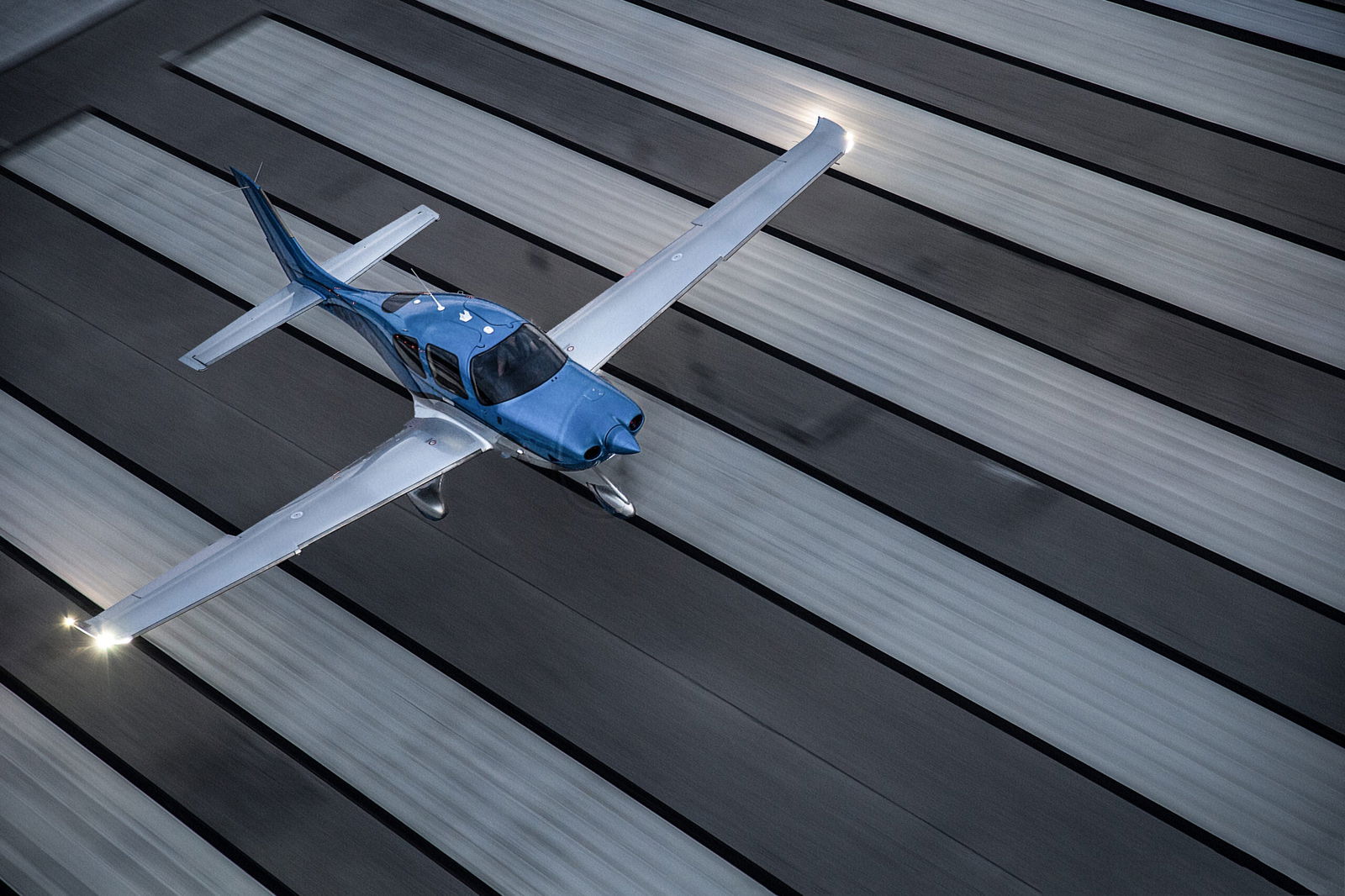
The skies were clear until we reached Charleston, where a wide band of heavy rain slid across Georgia and South Carolina. The conditions were predicted to remain crummy into the afternoon. To that point, I’d been enjoying exploring the new features of the Perspective+ avionics system, which is based on Garmin’s new G1000 NXi platform, but now I was about to gain my first inkling that the added technological capabilities really do warrant referring to this SR22 as a whole new generation.
Because of its greatly increased computing horsepower, Perspective+ is 10 times faster than the previous Perspective avionics in the G5 Cirrus, making enhanced capabilities possible. What stood out to me was the animated Nexrad radar images on the SiriusXM weather depiction that showed the movement of the storm cells and convinced me that landing to the east on Runway 9 was the prudent course of action despite the wind very slightly favoring an arrival from the opposite direction.

Into the Muck
Entering waypoints and approaches using the qwerty keyboard is so much easier than the alphanumeric keypad in my airplane that I’ve decided there’s really no point debating which is better. With the approach activated, we slid down the ILS and broke out at 700 feet to land on the rain-soaked runway. Ivy covered the wingtips and interior and ordered a fuel top-off before we headed into Atlantic Aviation and procured a crew car to take us for lunch at a seafood joint called Lokal Seabar on nearby Johns Island.
Our next leg after lunch would take us through the worst of the rain into Florida. Here again, the animated Nexrad imagery available in Perspective+ came in handy as we flew through green areas of precipitation on the map into yellow with heavier rain and turbulence. We could see that our course would take us quickly through the weather and rode out the bumps secure in the knowledge that the conditions the rest of the way to Miami would be much improved.
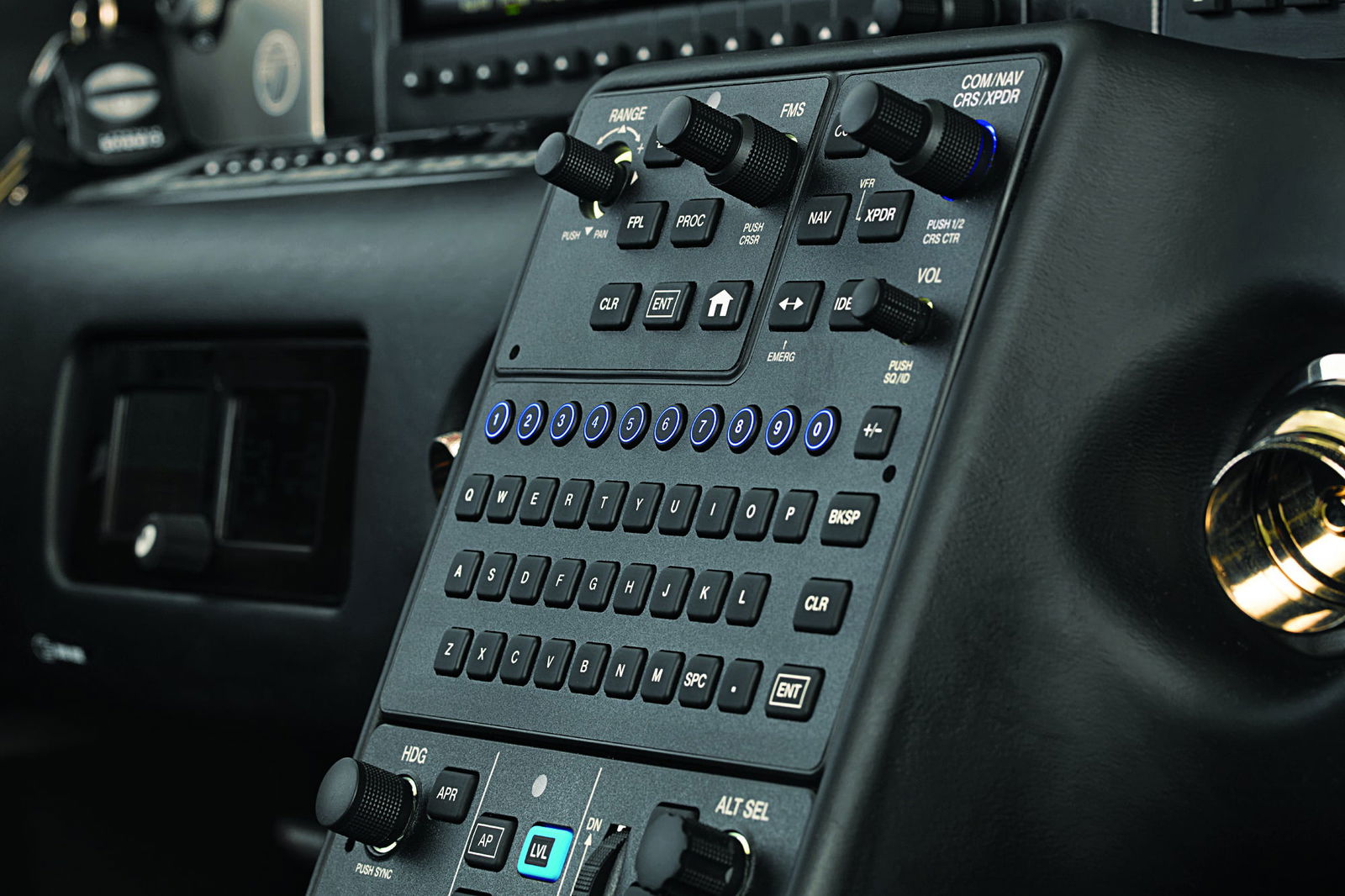
Our reward for cinching down our seat belts over South Carolina and parts of Georgia was the opportunity to break out into glorious skies for some cloud surfing as we skipped in and out of the tops of wispy vapor against a sky ablaze in the Day-Glo kaleidoscope of the late-afternoon sun.
“It’s time for some tunes, don’t you think?” Ivy suddenly suggested. I concurred and she called up SiriusXM’s Pop2K channel. Our headsets filled with dance-rock anthems that served as an energizing complement to the dazzling cumuliform vistas unfolding before us.
One of the songs that came on was Good Charlotte’s “Lifestyles of the Rich and Famous,” a single infused with punk-pop tempos and heavily steeped in class envy (the song’s lyrics advocate robbing the mansions of the wealthy). Ironically, Good Charlotte’s members today are grown men with families who admit to using aviation to its full advantage to see their kids more often while on tour. They just so happen to be rich and famous themselves now too, thanks to a string of hit songs, and are no longer trying to stick it to the man.

As I sat in the left seat listening to the song, it got me thinking. More people with the means to fly themselves in an airplane like this one really should. The SR22 is fast, safe, comfortable and a blast to fly. If only more people who could afford one understood what a personal time machine it really is. Of course, the SR22 is already the best-selling general aviation airplane in the world, with an annual production rate of around 300 SR models a year at the factory in Duluth, Minnesota. Still, I couldn’t help but think the number should be a lot higher.
Passing Florida’s Space Coast, the sun at last bid us a final farewell. By the time we switched over to Miami Center, blackest night had fallen. The plan was to stop in Miami and continue on to Marathon Key early the next morning. As Miami Executive Airport (KTMB) drew closer, the skies over South Florida became a hive of activity. We kept a watchful eye outside the cockpit and on the traffic display as ATC vectored us for landing on KTMB’s Runway 27R. The approach controller asked if I’d prefer the RNAV or a visual approach. I opted for the latter to give me the chance to try out another new feature in Perspective+, the ability to select a visual approach to any runway from the procedures menu. A few button presses later and I was receiving ILS-like guidance cues that took us all the way to the runway threshold.

We grabbed an Uber from the airport, checked into our hotel and then headed back out for dinner. After first confirming I was cool with raw fish, Ivy suggested Pisco y Nazca, a nearby Peruvian ceviche gastrobar. The ceviche was the best I’ve had, but the revelation for me was the crunchy corn kernels bathed in a light sauce, a perfect compromise between popcorn and nuts. I could have kept munching on them all evening.
We met up at breakfast the next morning to discover a 400-foot overcast layer that I confidently predicted would burn off by the time we got to the airplane. Of course, I was wrong. All set to depart but without a flight plan in the system, we tried our luck by asking clearance delivery for an IFR routing through the Miami Class B to Marathon. No dice. We’d have to file a flight plan. Not a problem, Ivy said. With a few taps on her iPhone, she created the flight plan in the Garmin Pilot app, filed it, and then used the wireless connectivity built into Perspective+ to beam the route into the flight deck.
I sat dumbfounded as Ivy keyed the mic no more than a minute after her previous radio call and asked for our IFR routing. Within moments the controller came back with the magic words: “Cirrus 833JR, cleared as filed.” Ivy and I grinned like we’d just robbed a bank.
Minutes later, I was rotating off Runway 9R and climbing through the thin cloud layer into the brilliant morning sunshine toward the coral cay chain of islands that stretch 113 miles to Key West and the uninhabited Dry Tortugas beyond. We sounded like the tourists from the north that we were when we asked for a direct routing to a fix called MNATE at the top of the Keys. We both got a chuckle that we botched the name so badly after the controller responded, “833JR, cleared direct Manatee.” Of course.
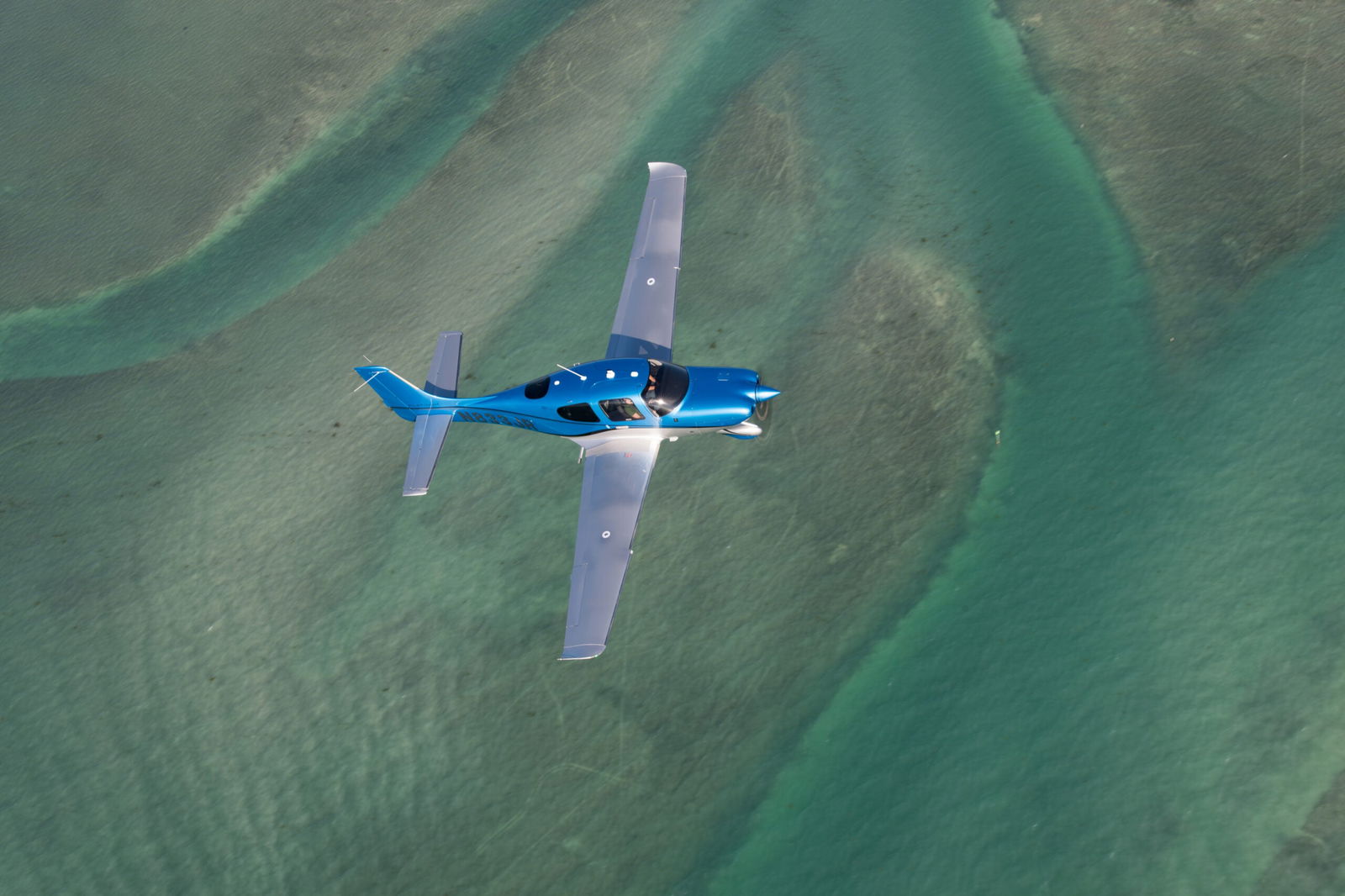
Island Time
Dropping down low as the cloud layer broke up nearer the middle Keys, we got our first glimpses of what would be the stunning backdrop for two air-to-air photo missions, one scheduled for that afternoon and the other for the following morning. Since we had some time to kill before the first photo flight, Ivy suggested we check out one of island’s main tourist attractions, the Marathon Turtle Hospital. Founded in the mid-1980s in a converted seaside motel, the hospital has helped rescue and rehabilitate more than 1,000 sea turtles that are brought in from all across the Florida Keys. The Turtle Hospital has operating rooms, X-ray machines, and a seawater swimming pool where the turtles can contentedly frolic. More than 40,000 people visit the hospital each year, making it one of the premier attractions in the Florida Keys.
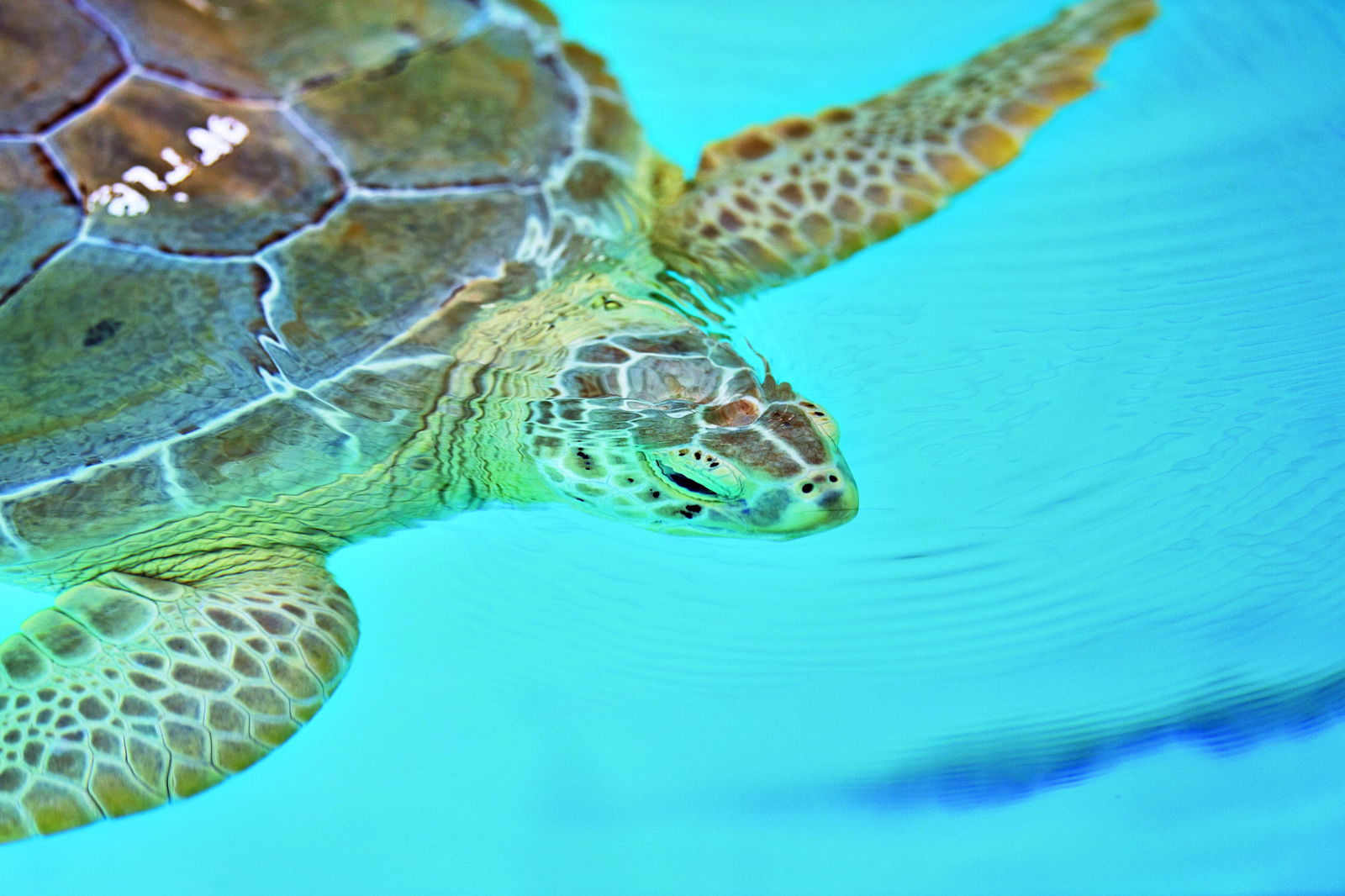
That afternoon, we met up with photographer Jim Koepnick and photoship pilot Bruce Moore to brief the flight and head out in formation over the Seven Mile Bridge, Boot Key Harbor and Marathon Lighthouse in the softening afternoon light in search of postcard-perfect vistas.
After sunset, we made a couple of low passes down the runway so that we could capture another of the unique features of the G6 SR22, the ethereal Spectra LED wingtip and downwash lights. I found it interesting to learn that the lights come on automatically when you press the key fob to unlock the doors and stay on until after takeoff passing through 200 feet agl. The lights then turn on automatically on descent for landing at 200 feet. Also included with the lighting package are courtesy lights in the baggage compartment and a downwash light on each step behind the wing.
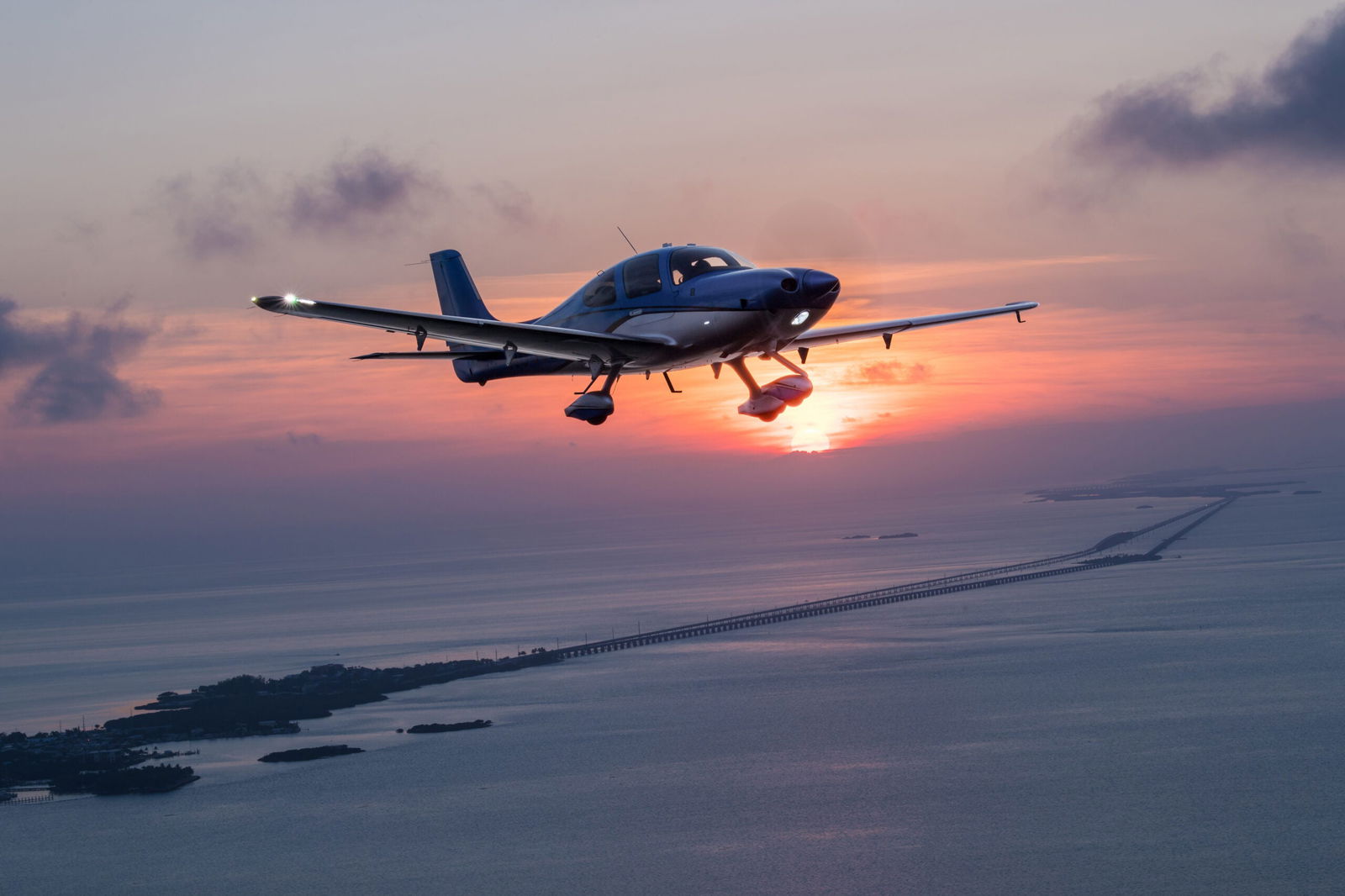
The same is true for the yaw damper, which automatically comes on and off at 200 feet agl on departure and arrival, obviating the need for a yaw damper button on the Garmin GFC 700 autopilot control panel. Other nice features of Perspective+ include an improved vertical flight display; the ability to call up digitized VFR sectional charts and IFR low en-route charts on the flight displays; decoded ATC frequencies that tell you at a glance who it is you’re talking to; and a moving map overlay on the primary flight display’s HSI that I came to like a lot after first wondering if I’d even want to turn it on. Thanks to the improved processors and extra computer memory, Perspective+ also boots up much faster, panning and zooming is effortless, and the displays are crisper and more vibrant.
That evening, the four of us had dinner at the Lighthouse Grill next to our hotel. Jim brought his laptop loaded with hundreds of photos from the shoot. Even though there was more than enough spectacular photography for the article, we were eager to head out for another photo flight the next day, this time departing from Marathon Key and traversing northeast up the island chain. In the morning, we loaded the obligatory Key lime pies into the Cirrus and Bruce’s Cessna 210 and blasted off for another enjoyable and satisfying flight over the lucid watercolor panoramas below.

An hour or so later, we bid Bruce and Jim farewell and selected a course northward. The original plan had been to fly back to New Jersey, but the Cirrus was needed in Knoxville, Tennessee, the home of the newly christened Cirrus customer delivery center, for an oil change and more demo flights. We decided I’d airline it home and chose Hartsfield-Jackson Atlanta International Airport (KATL) as our destination. Besides offering convenient nonstop airline service, I was stoked to get the chance to add to my logbook a landing at the busiest airport in the country.
As we neared KATL, Atlanta Approach told me to expect the visual to Runway 8L and issued vectors at 5,000 feet for what essentially turned out to be a very wide left-hand traffic pattern. At one point, the controller asked what my speed was. I looked down to see 170 knots indicated. “Cleared for the visual Runway 8L, follow the MD-90, caution wake turbulence,” he shot back, apparently satisfied that we weren’t going to gum up the works.
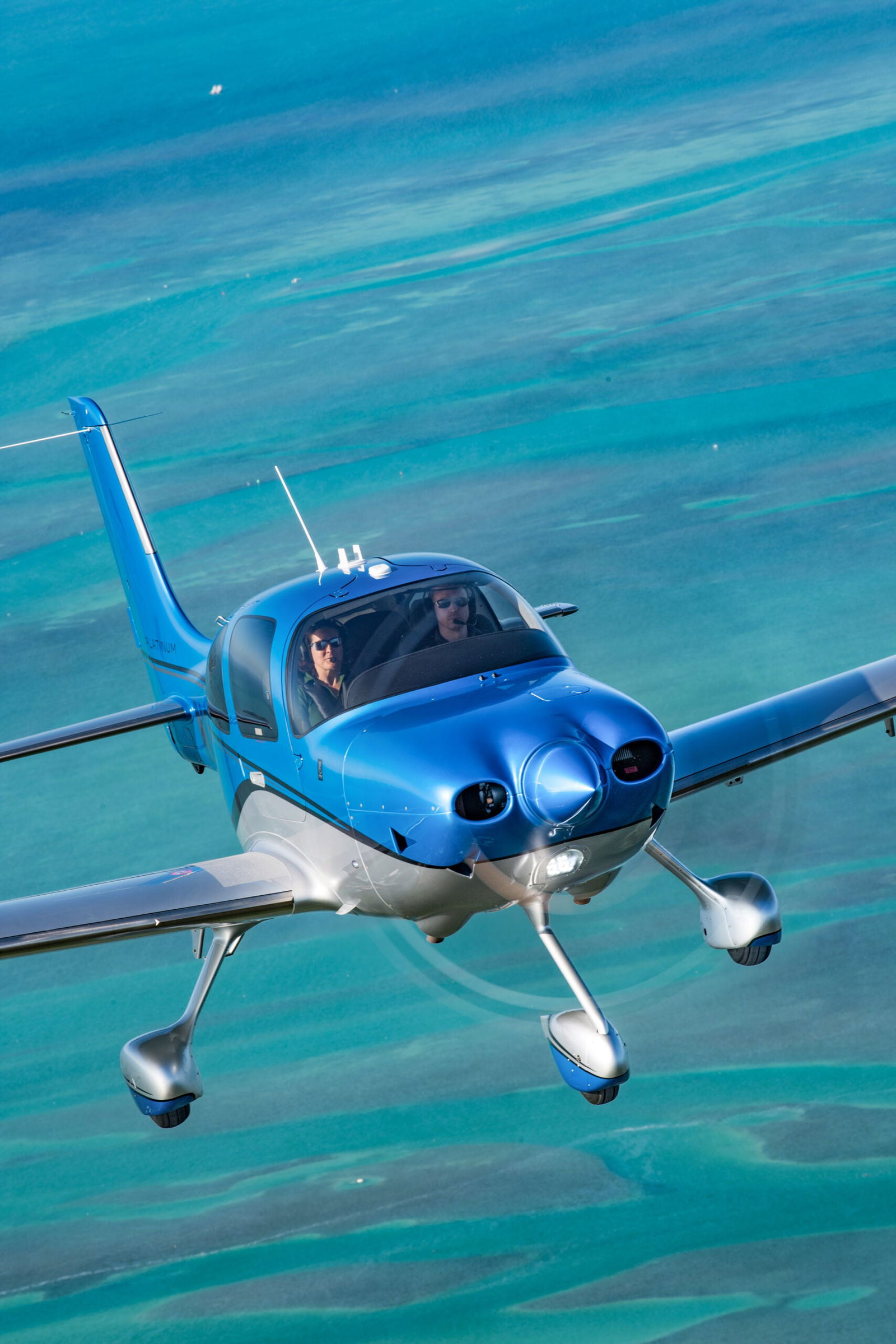
In the groove and sandwiched between two jets, I maintained a speed above 150 knots all the way down the bumpy approach. A virtue of the Cirrus is that it slows in a hurry, and I had no trouble pulling the power back as I got closer to the runway, adding flaps and making a normal touchdown, albeit farther down the runway than the MD-90 ahead of us to avoid his wake. It was a quick and easy taxi onto the GA ramp, and before I knew it I was stepping out into the too-cold sunshine and thanking Ivy for the incredible experience.
And really, that’s what an airplane like the SR22 does best — offers up amazing experiences that enrich its owners’ lives while enabling them to accomplish more with their limited time. The G6 is the finest Cirrus piston airplane yet, and my guess is demand will remain strong for the new model even with the SF50 Vision Jet now certified. After all, the SR22 is an ideal airplane for a great many missions, not to mention a perfect step-up airplane to the Vision Jet.
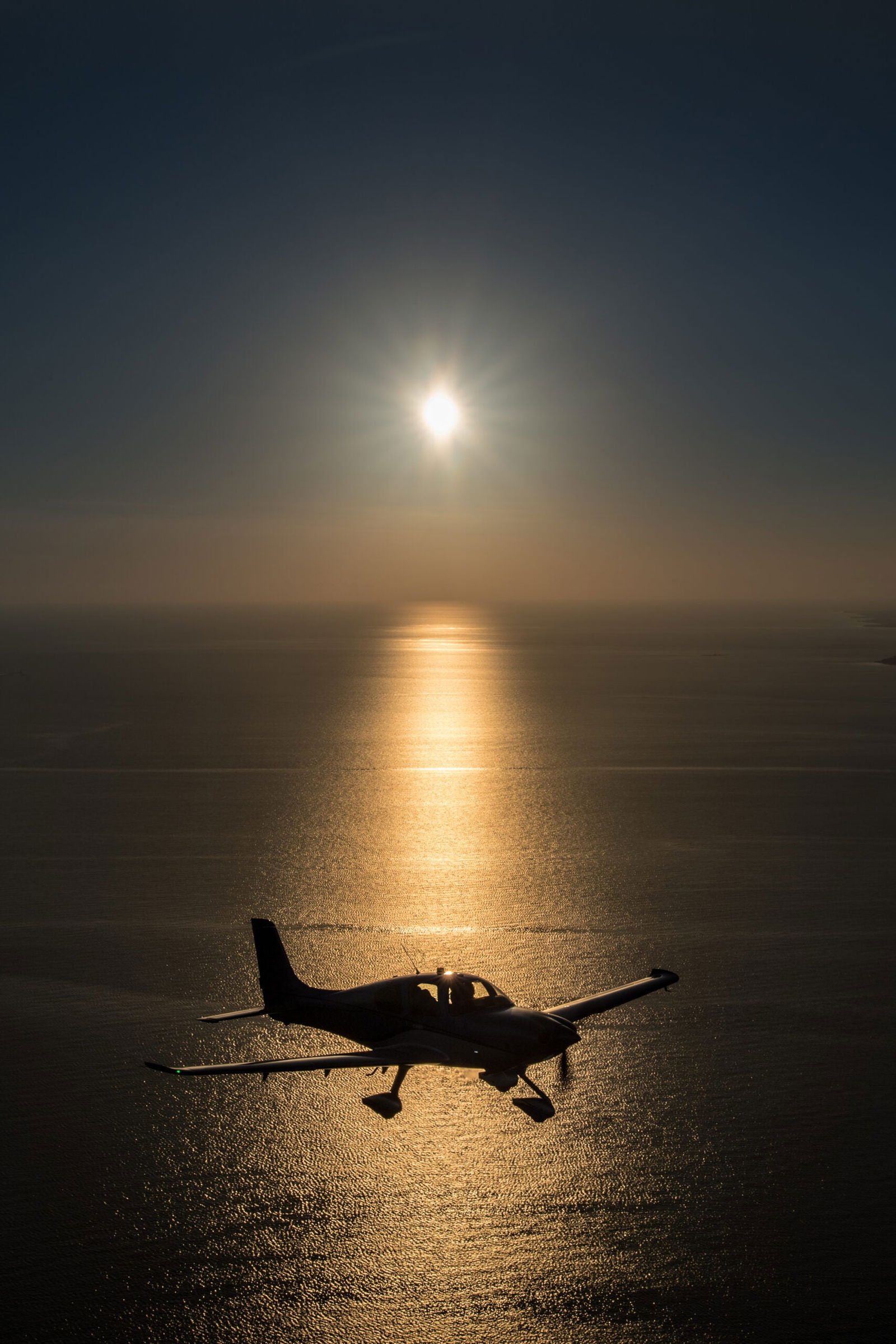
2017 Generation 6 Cirrus SR22T GTS
| Price | $862,900 |
| Engine | Continental TSIO-550-K (315 hp) |
| Propeller | Hartzell, three-blade composite, constant speed |
| Seats | Five |
| Length | 26 feet |
| Height | 8.9 feet |
| Wingspan | 38.3 feet |
| Wing area | 144.9 square feet |
| Wing loading | 24.8 pounds/square foot |
| Power loading | 11.4 pounds/hp |
| Max takeoff weight | 3,600 pounds |
| Max zero fuel weight | 3,400 pounds |
| Empty weight | 2,270 pounds |
| Useful load | 1,330 pounds |
| Max usable fuel | 92 gallons/553 pounds |
| Max operating altitude | 25,000 feet |
| Max rate of climb | 1,203 fpm |
| Never-exceed speed (VNE) | 205 kias |
| Max structural cruise (VNO) | 176 kias |
| Max range | 1,021 nm (45-minute reserve) |
| Stall speed, flaps up | 74 kias |
| Stall speed, full flaps | 61 kcas |
| Takeoff distance | 1,517 feet |
| Takeoff over 50 feet | 2,080 feet |
| Landing distance | 1,178 feet |
| Landing over 50 feet | 2,535 feet |




